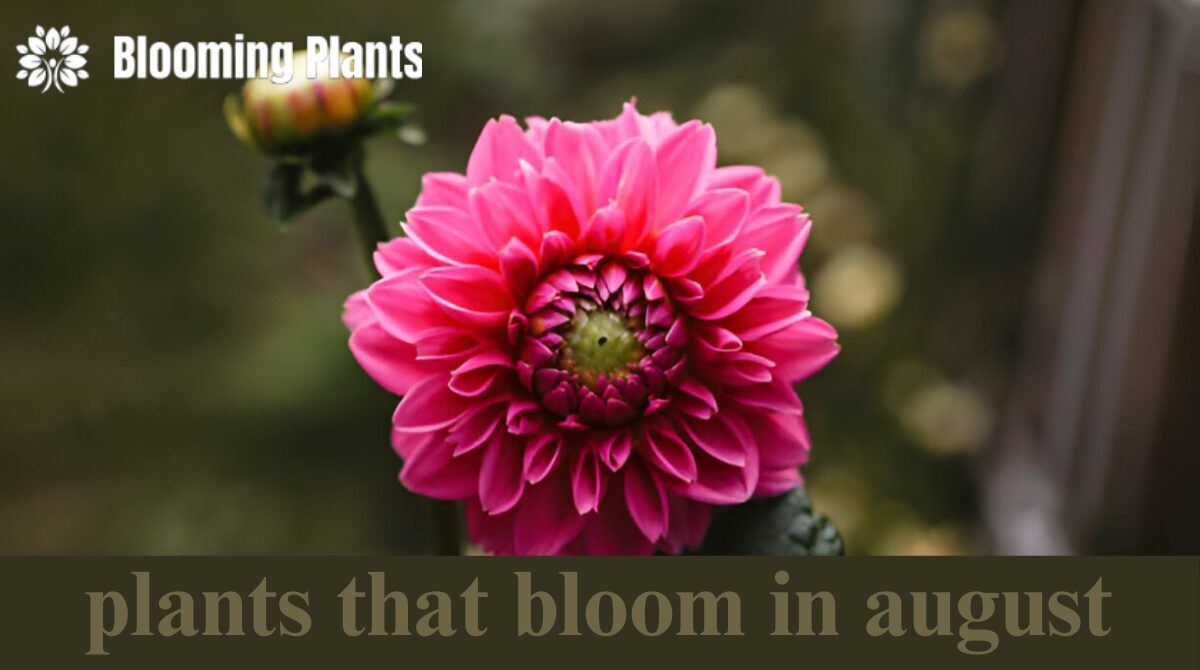When August arrives, the garden is in full swing, bursting with color and life. Knowing which plants bloom during this month can help you create a vibrant display that thrives in late summer heat. In this guide, we’ll dive deep into plants that bloom in August, providing details on their care, uses, and ways to incorporate them into your garden. Let’s ensure your garden remains lush and lively throughout the season.
Why Late-Summer Blooms Matter
Late-summer blooms are essential for maintaining visual interest and supporting pollinators like bees, butterflies, and hummingbirds. By choosing plants that peak in August, you’ll:
- Prolong your garden’s bloom season.
- Provide critical food sources for pollinators when many spring and early summer plants have faded.
- Create a beautiful landscape that thrives in hot, sunny conditions.
Let’s explore the top plants that shine in August.
Perennials That Bloom in August
Coneflowers (Echinacea spp.)
Coneflowers are a garden staple for late summer. Their daisy-like blooms come in various colors, including purple, pink, yellow, and white.
Key Facts:
- Height: 2-4 feet
- Light: Full sun to partial shade
- Water: Moderate; drought-tolerant once established
- Soil: Well-drained
Why Grow Coneflowers?
- Pollinator magnet: Attracts bees and butterflies.
- Low maintenance: Perfect for busy gardeners.
- Medicinal use: Echinacea is commonly used in herbal remedies.
Black-Eyed Susans (Rudbeckia hirta)
Known for their cheerful yellow petals and dark centers, Black-Eyed Susans add a sunny vibe to any garden.
Key Facts:
- Height: 1-3 feet
- Light: Full sun
- Water: Drought-tolerant once established
- Soil: Prefers well-drained but adaptable to clay
Pro Tip:
Deadhead spent blooms to encourage continuous flowering through August and into early fall.
Daylilies (Hemerocallis spp.)
Daylilies are famous for their wide range of colors and hardiness.
Key Facts:
- Height: 1-3 feet
- Light: Full sun to partial shade
- Water: Moderate
- Soil: Well-drained, enriched with organic matter
Did You Know?
Although each bloom lasts only a day, established clumps can produce dozens of flowers over weeks, keeping your garden lively.
Annuals That Steal the Show in August
Zinnias (Zinnia elegans)
Zinnias are among the easiest annuals to grow, offering bold colors and continuous blooms.
Key Facts:
- Height: 1-4 feet
- Light: Full sun
- Water: Low to moderate
- Soil: Well-drained
Benefits:
- Great as cut flowers
- Attract butterflies
- Resilient to heat and drought
Cosmos (Cosmos bipinnatus)
Cosmos deliver delicate, daisy-like flowers that sway gracefully in the summer breeze.
Key Facts:
- Height: 1-6 feet (depending on variety)
- Light: Full sun
- Water: Moderate
- Soil: Prefers sandy, well-drained soil
Fun Fact:
Cosmos seeds are easy to collect and save for planting next year.
Shrubs That Bloom in August
Hydrangeas (Hydrangea spp.)
Hydrangeas are garden showstoppers, producing large clusters of blooms that range from pink to blue based on soil pH.
Key Facts:
- Height: 3-8 feet
- Light: Morning sun with afternoon shade
- Water: Requires consistent moisture
- Soil: Rich, well-drained soil
Tips for Success:
Add aluminum sulfate to your soil to encourage blue blooms, or lime for pink flowers.
Rose of Sharon (Hibiscus syriacus)
This hardy hibiscus shrub thrives in August, offering tropical-looking blooms.
Key Facts:
- Height: 8-12 feet
- Light: Full sun
- Water: Moderate
- Soil: Adapts to various soil types
Uses:
- Ideal for hedges and screens
- Adds a tropical vibe to temperate gardens
Late-Summer Blooming Vines
Morning Glory (Ipomoea spp.)
Morning Glories are quick-growing vines that produce trumpet-shaped flowers, perfect for trellises or fences.
Key Facts:
- Height: 6-15 feet
- Light: Full sun
- Water: Moderate
- Soil: Well-drained
Bonus Tip:
Soak seeds overnight before planting to enhance germination.
Trumpet Vine (Campsis radicans)
Known for its bold orange or red tubular flowers, the Trumpet Vine is a hummingbird favorite.
Key Facts:
- Height: 20-40 feet
- Light: Full sun
- Water: Low to moderate
- Soil: Adapts to most soils
Warning:
This vine can be invasive, so keep it pruned to maintain control.
Best Practices for a Thriving August Garden
Watering Tips
- Water deeply and less frequently to encourage deep root growth.
- Avoid overhead watering to reduce the risk of fungal diseases.
Mulching Benefits
- Retains soil moisture
- Suppresses weeds
- Moderates soil temperature
Fertilizing
Use a balanced, slow-release fertilizer to support continuous blooms.
FAQs About August Blooming Plants
What plants thrive in August heat? Many perennials like coneflowers, daylilies, and Black-Eyed Susans are heat-tolerant and thrive in the summer sun.
Can I plant anything new in August? Yes, consider planting fall-blooming perennials like asters or late-season annuals like marigolds.
How do I keep my garden looking fresh in late summer? Regular deadheading, mulching, and strategic watering are key to maintaining a vibrant garden.
Which plants attract pollinators in August? Coneflowers, zinnias, and trumpet vines are excellent choices for attracting bees, butterflies, and hummingbirds.
Do August blooming plants need special care? Most require regular deadheading, consistent watering, and well-drained soil to thrive.
How can I prevent my plants from wilting in the heat? Water early in the morning and mulch to retain moisture. Provide shade for sensitive plants.
Can I grow these plants in containers? Yes, many plants like zinnias, cosmos, and coneflowers grow well in pots with adequate drainage.
What’s the best soil type for summer-blooming plants? Most prefer well-drained soil enriched with organic matter.
Are there any shade-loving plants that bloom in August? Yes, plants like hostas and certain hydrangeas thrive in partial to full shade.
How can I ensure blooms next August? Plan ahead by planting perennials, using proper fertilization, and maintaining good garden hygiene.

